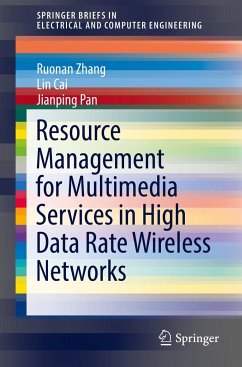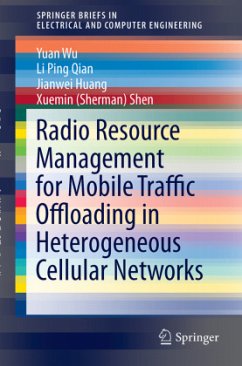
Resource Management Policies for Wireless and Visual Sensor Networks
Versandkostenfrei!
Versandfertig in 6-10 Tagen
51,99 €
inkl. MwSt.

PAYBACK Punkte
26 °P sammeln!
In this book, we explore application-aware techniquesfor managing the limited resources in wireless sensornetworks, focusing on ways to maximize the networklifetime for clustered wireless sensor networks andfor visual sensor networks. First, we explore energyefficient clustered network architectures, as well ascluster head selection policies that satisfy theapplication-specific QoS constraints. Next, as webelieve that the real potential of wireless sensornetworks lies in their integration with advancedsensing modalities, we explore the use ofapplication-aware resource allocation specificallyfo...
In this book, we explore application-aware techniques
for managing the limited resources in wireless sensor
networks, focusing on ways to maximize the network
lifetime for clustered wireless sensor networks and
for visual sensor networks. First, we explore energy
efficient clustered network architectures, as well as
cluster head selection policies that satisfy the
application-specific QoS constraints. Next, as we
believe that the real potential of wireless sensor
networks lies in their integration with advanced
sensing modalities, we explore the use of
application-aware resource allocation specifically
for visual sensor networks. Designing efficient
visual sensor networks is challenging due to their
high demand for network resources, their tight QoS
requirements and the unique sensing capabilities of
the imagers. We focus specifically on camera-node
management policies, discussing methods for the
selection and scheduling of camera-nodes in
user-centric visual sensor networks. These management
strategies provide an efficient means of managing the
network's resources by reducing the redundant data
while providing the user with the required quality of
data.
for managing the limited resources in wireless sensor
networks, focusing on ways to maximize the network
lifetime for clustered wireless sensor networks and
for visual sensor networks. First, we explore energy
efficient clustered network architectures, as well as
cluster head selection policies that satisfy the
application-specific QoS constraints. Next, as we
believe that the real potential of wireless sensor
networks lies in their integration with advanced
sensing modalities, we explore the use of
application-aware resource allocation specifically
for visual sensor networks. Designing efficient
visual sensor networks is challenging due to their
high demand for network resources, their tight QoS
requirements and the unique sensing capabilities of
the imagers. We focus specifically on camera-node
management policies, discussing methods for the
selection and scheduling of camera-nodes in
user-centric visual sensor networks. These management
strategies provide an efficient means of managing the
network's resources by reducing the redundant data
while providing the user with the required quality of
data.












